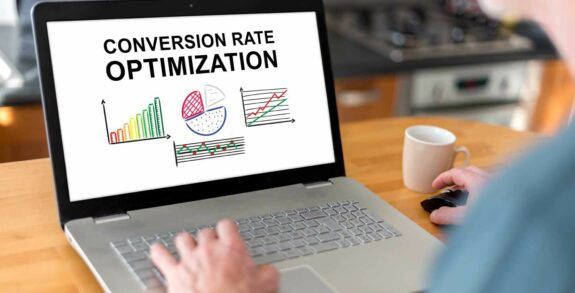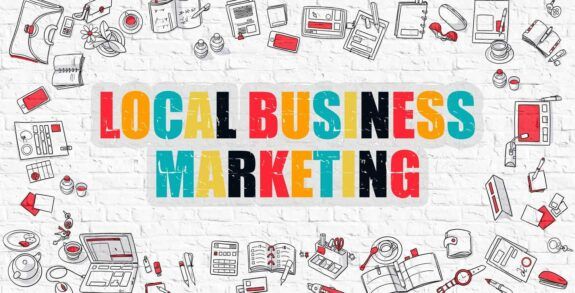7 Tips to meet Website Accessibility Standards to Capture 20% more Web Traffic

Having a great website means checking off multiple boxes including visually engaging, good if not great content, optimized SEO, strong CTA’s, great images, and fantastic navigation. But one box that is often overlooked is accessibility. Is your website accessible for all people, including those with disabilities? As a top web design company, we have experience creating sites that are usable by everyone, which is why we wanted to share our 7 Tips to meet Website Accessibility Standards to capture 20% more web traffic.
Why is Website Accessibility Important?
Unfortunately, web accessibility is sometimes viewed through a narrow lens, only considering people that have an average level of hearing, vision, or input capabilities. However, approximately 20% of our population (57 million people) have some form of a disability. By not having a site that is fully accessible to all, you are missing out on potentially 20% of all available web traffic.
Additionally, there are other factors to consider:
- Reputation – In many cases, a business that does not meet certain moral or ethical standards is on the receiving end of a public backlash. Providing equal access to all is an area that falls under that umbrella. Therefore not being fully accessible could negatively affect your reputation.
- Loyalty – If your site is not easy to use for a customer but a competitor site is, who do you think will end up getting more business and earning loyalty over time? A sizable percentage of people with disabilities prefer to shop online because it is easier. You can foster loyalty from users who appreciate businesses that ensure everyone has full accessibility.
- Conversions – Approximately 18% of all adults in the U.S. have a degree of difficulty hearing. Approximately 8% have vision issues. Those numbers represent conversions that could be lost simply because of inattentiveness to the overall user-friendliness of your site to all potential customers.
7 Tips to Meet Website Accessibility Standards
Web developers and designers who understand the necessity of accessibility to all potential users make use of the World Wide Web Consortium’s (W3C) Web Accessibility Initiative guidelines to ensure sites are properly optimized.
These are 7 Tips every site should incorporate to increase website accessibility:
- Fully Responsive Site – A fully responsive website design will ensure that all users will have ease of access and visibility regardless of the size of the screen or device used to access the site.
- Alt Tags on Images – Some people rely on screen readers, refreshable Braille displays, or other technologies to access information displayed on a website. However, those tools cannot interpret images such as pictures, charts, graphic elements, or photos. Therefore, every image should also include an Alt Tag. An Alt Tag is a simple piece of HTML that relays a text description of what the image contains or conveys.
- Proper TTB Ratio – The text-to-background web page ratio is important to the overall ability of a user to read a website. Some designers reduce the contrast between text and background for aesthetic purposes. That can negatively affect accessibility. Per W3C the ideal ratio is 4:5:1 and this should be used on all pages.
- Include Captions on Video – Much like adding Alt Tags for images, captions should be included on videos. Along with assisting people who have hearing loss in understanding the video content better, there are situations where people might wish to view a video without sound.
- Spacing and Font Size – Similar to the TTB ratio, there are specific parameters that should be used for font and spacing to ensure readability. The font should be at least 16 pixels. This might be a shock to some as people regularly use 12 pixels which is closer in size to a 12-point font on documents. Anything less than 16 pixels reduces readability and comprehension. The spacing between lines should be 25 percent of the font size. Also, space between paragraphs should be at least 1.5 times the size of the line height.
- Improved Navigation – There are a few ways navigation should be approached. Along with using intuitive and common design elements for navigation, there should be a focus on keyboard navigation on your site as not everyone can use a mouse. Additionally, visuals and symbols should be emphasized to make navigation and movement as clear as possible.
- Include Assistive Technology – Every site should work with common assistive technology such as screen readers and language plug-ins to allow maximum accessibility for users. There are also things such as various Windows or Mac accessibility features that should be accounted for.
Another important consideration when designing for complete accessibility is to remember that all site testing should include disabled users within the test group. That way the feedback from testing will include all potential users and not just 80% of users.
The Bottom Line
The bottom line is that everyone should have complete access to all the websites on the internet. The purpose of the internet was to share information and along with being ethically and morally correct, it makes the most sense from a business perspective. Our 7 Tips to meet Website Accessibility Standards will help ensure your site is meeting the needs of each and every customer without alienating anyone which leads to a loss of conversions and revenue.
Be sure to check back every week for great new Lounge Lizard blog articles.






